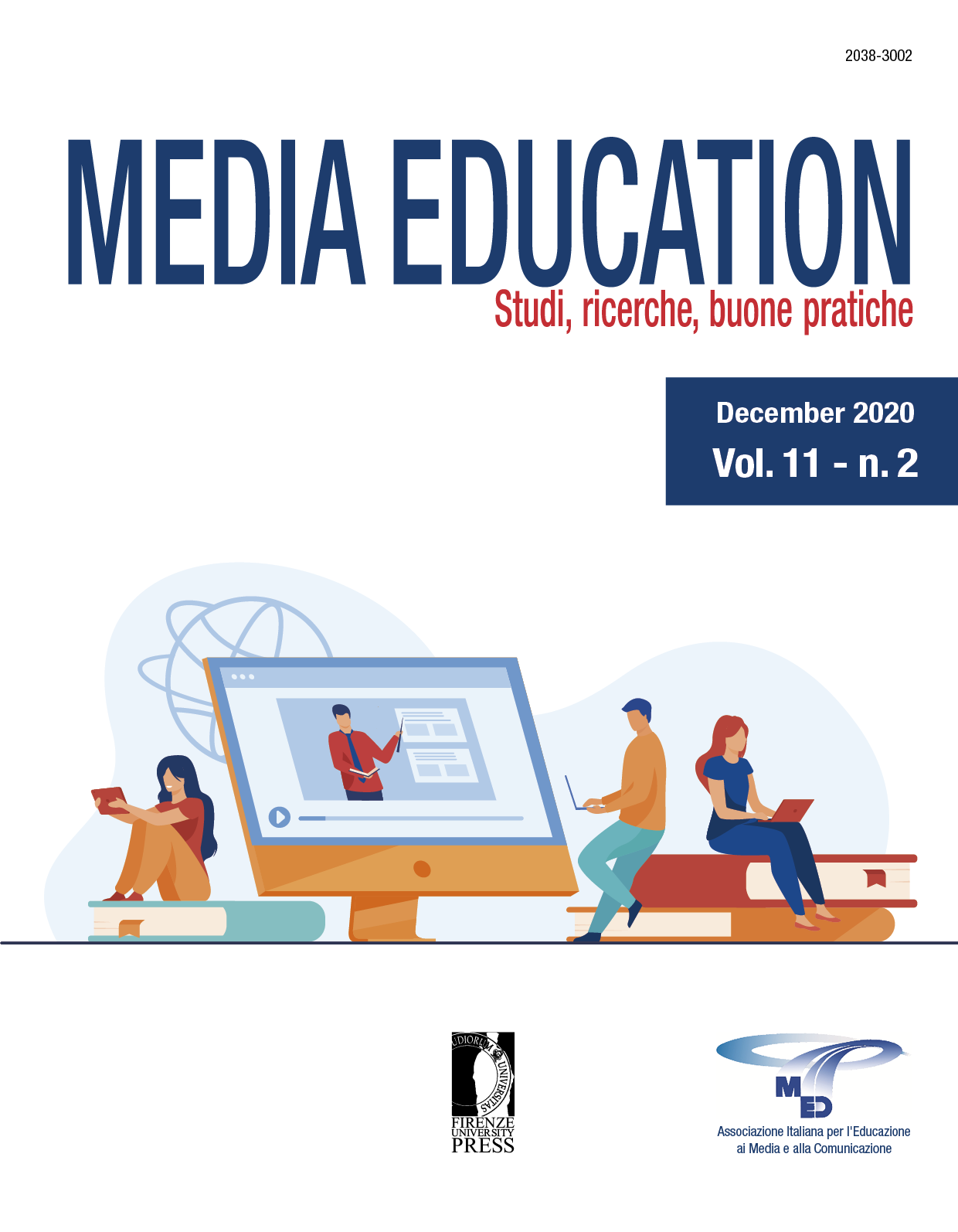Published 2020-11-02
Keywords
- digital teaching competence,
- teaching tools,
- teaching strategies,
- home-schooling
Abstract
The COVID-19 home-schooling situation has become a catalyst for educational institutions to search for and deploy innovative solutions within a relatively short period of time. Since many teachers have been forced to employ technical or digital approaches with which they have had little to no prior experience, this situation might give rise to a push for digital education. In the present study we employed a two-part interview-survey to investigate how home-schooling affects German teachers’ general technical affinity and their digital teaching competence during home-schooling. Furthermore, the qualitative properties of the implementation of home-schooling were explored. The results of the study revealed that the teachers’ digital teaching competence, but not their technical affinity, changed during the pandemic. An increase in digital teaching competence was only identifiable for the first weeks of the pandemic. Qualitative analyses showed that the teachers used three different types of educational tools: (1) digital tools, (2) analogue tools, and (3) technical tools. Over the course of the pandemic the usage of those tools became more structured. However, structures were mostly built on a micro-level, e.g., by individual teachers for their classes; no macro-structures like class-comprehensive rules or even strategy papers for digital teaching were developed.
References
Beil, J., Cihlar, V., & Kruse, A. (2015). Bereitschaft zur Akzeptanz einer internetbasierten Mobilitätsplattform bei verschiedenen Alterskohorten. Empirische Befunde des Projekts S-Mobil 100 [Willingness to accept an Internet-based mobility platform in different age cohorts. Empiric results of the project S-Mobil 100]. Zeitschrift fur Gerontologie und Geriatrie, 48(2), 142–149. https://doi.org/10.1007/s00391-013-0546-0
Bullock, D. (2004). Moving from theory to practice: An examination of the factors that pre-service teachers encounter as they attempt to gain experience teaching with technology during field placement experiences. Journal of Technology and Teacher Education, 12, 211–237.
Desimone, L. M. (2011). A primer on effective professional development. Phi Delta Kappan, 92, 68–71.
Eickelmann, B., Gerick, J., Drossel, K., & Bos, W. (Eds.). ICILS 2013 – Vertiefende Analysen zu computer- und informationsbezogenen Kompetenzen von Jugendlichen. Münster: Waxman.
Herzig, B., & Grafe, S. (2007). Digitale Medien in der Schule: Standortbestimmung und Handlungsempfehlungen für die Zukunft ; Studie zur Nutzung digitaler Medien in allgemein bildenden Schulen in Deutschland. Bonn: Dt. Telekom.
Karrer, K., Glaser, C., Clemens, C., & Bruder, C. (2009). Technikaffinität erfassen – der Fragebogen TA-EG. In C. Lichtenstein, Stößel, & C. Clemens (Eds.), ZMMS Spektrum. Der Mensch im Mittelpunkt technischer Systeme. 8. Berliner Werkstatt Mensch-Maschine-Systeme (pp. 196–201). Düsseldorf: VDI Verlag GmbH. Retrieved from https://www.mms.tu-berlin.de/fileadmin/fg268/Forschung/TA-EG_Fragebogen_Technikaffinitaet.pdf
Kempf, D. (2015). Digitale Schule – vernetztes Lernen. Retrieved from https://www.bitkom.org/Publikationen/2015/ Studien/Digitale-SchulevernetztesLernen/BITKOM-Studie-Digitale-Schule-2015.pdf
KMK, & Bogedan, C. (2016). Strategie der Kultusministerkonferenz. In Kultusministerkonferenz (Ed.), Strategie der Kultusministerkonferenz.
Knezek, G., & Christensen, R. (2002). Impact of new information technologies on teachers and students. Education and Information Technologies, 7(4), 369–376.
Lawless, K. A., & Pellegrino, J. W. (2007). Professional development in integrating technology into teaching and learning: Knowns, unknowns, and ways to pursue better questions and answers: Review of Educational Research, 77(4), 575–614.
Lee, M. K. O., Cheung, C. M. K., & Chen, Z. (2005). Acceptance of internet-based learning medium: The role of extrinsic and intrinsic motivation. Information and Management, 42(2), 1095–1104.
Marquie, J. C., Jourdan-Boddaert, L., & Huet, N. (2002). Do older adults underestimate their actual computer knowledge? Behaviour and Information Technology, 21(4), 273–280.
Nicolle, P. S., & Lou, Y. (2008). Technology adoption into teaching and learning by mainstream university faculty: A mixed methodology study revealing the how, when, why, and why not. Journal of Educational Computing Research, 39(3), 235–265.
Ray, C. M., Sormunen, C., & Harris, T. M. (1999). Men’s and women’s attitudes toward computer technology: a comparison. Office Systems Research Journ, 17(1).
Reed, K., Doty, H. D., & May, D. R. (2005). The impact of aging on self-effcacy and computer skill acquisition. Journal of Managerial Issues, 17(2), 212-228.
Scheiter, K., & Lachner, A. (2019). DigitalPakt – was nun? Eine Positionierung aus Sicht der Lehr-Lernforschung. Unterrichtswissenschaft, 47(4), 547–564. https://doi.org/10.1007/s42010-019-00059-2
Schumacher, P., & Morahan-Martin, J. (2001). Gender, Internet and computer attitudes and experiences. Computers in Human Behavior. (17), 95–110.
Starke, A., Leinweber, J., & Ritterfeld, U. (in press). Designing apps to facilitate (second) language acquisition in children. In Rohlfing & C. Müller-Brauns (Ed.), International perspectives on digital media and early literacy: The impact of digital devices on learning, language acquisition and social interaction. London: Routledge.
Tappe, E.‑H. (2017). „Lernen durch Mediengestaltung – Entwicklung eines Konzeptes zur Unterstützung mediendidaktischer Lehre im Schulalltag“. Retrieved from https://d-nb.info/1163319627/34
Weinreich, F., & Schulz-Zander, R. (2000). Schulen am Netz — Ergebnisse der bundesweiten Evaluation. Zeitschrift Für Erziehungswissenschaft, 3(4), 577–593. https://doi.org/10.1007/s11618-000-0054-z

